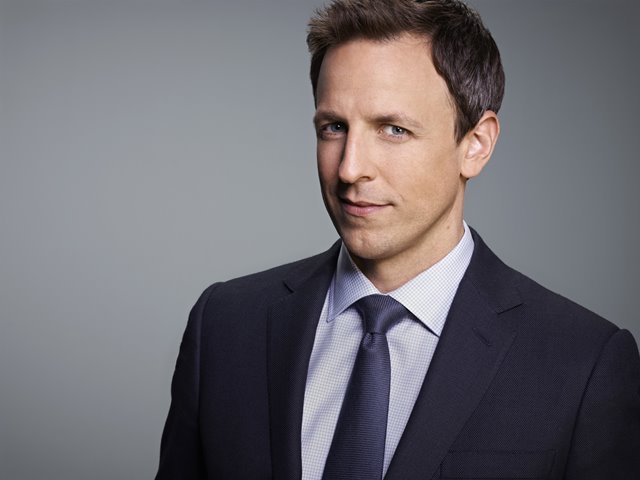Seth Meyers may have issued an on-air invite to House Speaker Paul Ryan, but the “Late Night” host is not holding his breath waiting for the RSVP.
“I have great doubts he will ever come on our show,” Meyers told reporters in a recent roundtable. “Paul Ryan will go on any show if he can talk about health care and tax cuts, but I think he knows that if he came on our show, we want to ask about the behavior of the president, and I don’t think he has any thirst to answer those questions.”
Being turned down by prospective Republican guests is nothing new for Meyers.
Back in October, just weeks before Donald Trump would win the election, “Late Night with Seth Meyers” did four nights of shows from Washington D.C. and found it difficult to book Republican guests — despite, as Meyers put it, “trying very hard.”
“The reality is, before the election, [Republicans] also didn’t think Trump would win and they didn’t want to have to go on TV and talk about him and defend him,” he said. “And I think to some degree that’s still the biggest issue for Republicans.”
Meyers has interviewed Sen. Ted Cruz in the past and sat down with Trump surrogate Kellyanne Conway in January.
Keeping up with the action on both sides of the aisle is a heavy lift these days for those in late night. In Meyers’ corner of the TV world, it’s an effort that has led to the hiring of additional hands.
“Late Night” added people to their research and graphics staffs to help produce Meyers’ signature “Closer Look” segments, deeper dives that are posted online prior to the show’s airing to maximize eyeballs and relevance.
Meyers said they increased their research staff “four-fold,” and added with a grin that the show now has four researchers.
“I just have volumes of praise for all these people who started working on our show without this expectation that the show would turn into this thing,” he said.
That “thing,” of course, is a show that’s at the mercy of a faster and crazier-than-ever news cycle.
Meyers and Co. saw the true nature of the never-ending news beast the night Michael Flynn resigned as National Security Adviser. “Late Night” had planned a piece about Flynn set to air that night, but the news of his exit came in the time between the show’s taping and its airing.
“It was so weird to have that moment of, ‘Wow, it went bad in six hours,'” Meyers said.
Myers said having a dearth of content on the show is no longer a fear.
“Late Night’s” ability to navigate the choppy political waters has won him praise and a captive audience.
Ratings have dipped slightly, but Meyers’ show has gained nearly 600,000 YouTube subscribers since November, according to figures from Socialblade.
Whereas lead-in Jimmy Fallon has taken heat for his softball approach to political material, Meyers is at home wading into the thick of it and the audience has taken note.
Meyers, who was quoted in a New York Times profile about Fallon last week, said he recognizes the difficulty in both approaches.
“I think it’s good that there are people approaching it different ways,” he said. “For the shows that are less political, I don’t think they just sit there all day with their feet up waiting for taping time to roll around. I think they’re working just as hard as we are.”
Each day comes with its own challenges, and Meyers decided after the election — when he predicted the outcome incorrectly — to stop trying to forecast what will come next.
In that, he’s found some peace.
“What I’ve learned is I have no idea what’s going to happen next month, I have no idea what’s going to happen tomorrow, but when we do our show at 6:30, I know what happened today and I’m going to tell you to the best of my ability what that was.”
